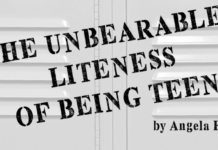Tomoaki Fujimura is an apprentice guide for Selkirk Tangiers. His story begins much further back than a place to play in a town we call Revelstoke.
When Tomo was 18, he was in the academic system when an earthquake struck Osaka, Japan and he realized that he was never taught now to survive. He questioned the Japanese way of the conveyer belt of information coming to kids. Tomo spent time with his grandparents in the south of Japan, where he explored the nature where he developed a love for the outdoors; however his education was in the city, which was ultimately what forced him to question the societal norms of Japanese way in terms of education about safety.
“By the age of 18, I did not know safety issues. I wanted to learn the simple life how to survive without water, money— we as humans should have ways to survive-city life does not provide.”
Tomo had a very different way of thinking from the social norms of his surroundings and had different ideologies that were not necessarily well received by his elders. Tomo decided to move to British Columbia to expand his horizons.
He moved to Cranbrook in 1995 to attend the East Kooteney Community College (Now College of the Rockies) simply because he knew that there was not a large Japanese population, therefor he would be forced to only speak English and develop his skills.
“I wanted to get away from Japanese society; I wanted to force myself to learn. Whenever it is convenient, or a pathway to escape, it’s easy to take. I forced myself not to speak Japanese. I could not see Cranbrook on the North American map and I figured out it would be less of a possibility that I would meet Asians or Japanese. I wanted to learn, I knew it would be best if I was not around those that spoke my language.” Tomo shared.
Tomo’s love for the outdoors and passion for safety, he ventured into the avalanche world in Fernie, but due to the seasonal nature of the work he would not be able to sustain his status in Canada. Tomo then created a position as Japanese marketing for the Canadian Rockies.
In 2006, Tomo was swept up in a size three-outbound avalanche, while he was attending someone with first aid.
“I did not know anything about PTSD. I took one day off; I went back to work, three days after my incident a girl on the island was killed. (The avalanche was) size 3.5 or 4 while doing weather observation. So I had to question how the forecaster is thinking, how Canadians avalanche forecasting programs run.”
Tomo shared how the avalanche was like a rugby player charging you at full speed and ramming you, only with 100 times the force of a human. Luckily, Tomo escaped the narrow margin of death, only to climb out of it, and begin searching for the others entangled in the mess.
“Nobody knew I was in it, until afterwards. They groomed it over with no investigation. It was not professional. I was not happy at all how the process was. This information of what happened was not delivered or shared and three days later that girl died.”
When asked how he handles the stress of the memory Tomo told the Current, “Two days after, I went back, another avalanche came down and it flashed in my brain; very traumatic. Even these days when I respond, it is always on my mind.”
Tomo dedicated many hours to the history of the most catastrophic avalanche in Canadian history, which took place in 1910 which claimed the lives of 58 men, 32 of them being Japanese.
“When a Canadian wanted to make this happen, I thought it was great. Cathy (English) approached me, and it was a special feeling that was attached to my emotions. This could be a way to heal myself and a path or a message to give to Japan and Japanese society that have either denied or rejected my experience of avalanche experience in Canada.”
Tomo shared that his elders were not too keen on listening to his experiences as he was much younger than those that were a major part of The Japan Avalanche Network (JAN). He struggled with reaching his elders with important information about avalanches all the while trying to respect societal norms of Japanese culture.
“I was out of society because I was westernized. They are first generation and it can be a battle. It’s happening still, we have opened the market, and some of us are recognized, but it is a closed country at times. This is a tool I could use to show the respect to the hierarchy or elders. This would show I am not against their way.”
Tomo spent two-years searching for the names of the 32 Japanese workers who lose their lives that brutal day in March of 1910. Tomo found a Vancouver based-Japanese newspaper that had the names of men and he was able to connect the names to pay stubs he acquired. Tomo connected with a professor in Kyoto, Japan who studied in depth the Canadian-Japanese historical happenings who helped him connect with a few families of the long lost railroaders.
Out of the 32 men, Tomo has found the names of all the individuals and has also tracked down five of the families ancestors still living in Japan and shared with them their family members’ story.
“Many cried and were thankful. Some did not want to know much and did not want to proceed. I did find one family by newspaper, and his grandson came over at 80 years old, who did not know anything about his grandfather.”
As for Tomo, this research project has been somewhat therapeutic. He shared that the day the avalanche came down on him would always play over in his mind. It will never fully leave him. “It may be (therapeutic) down the line, but for now, it is always with me.”



